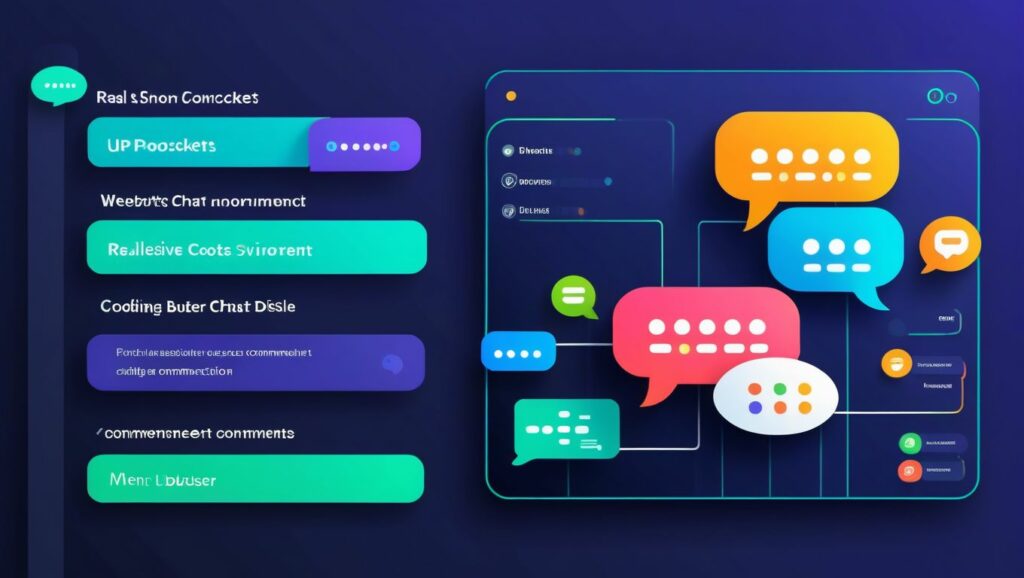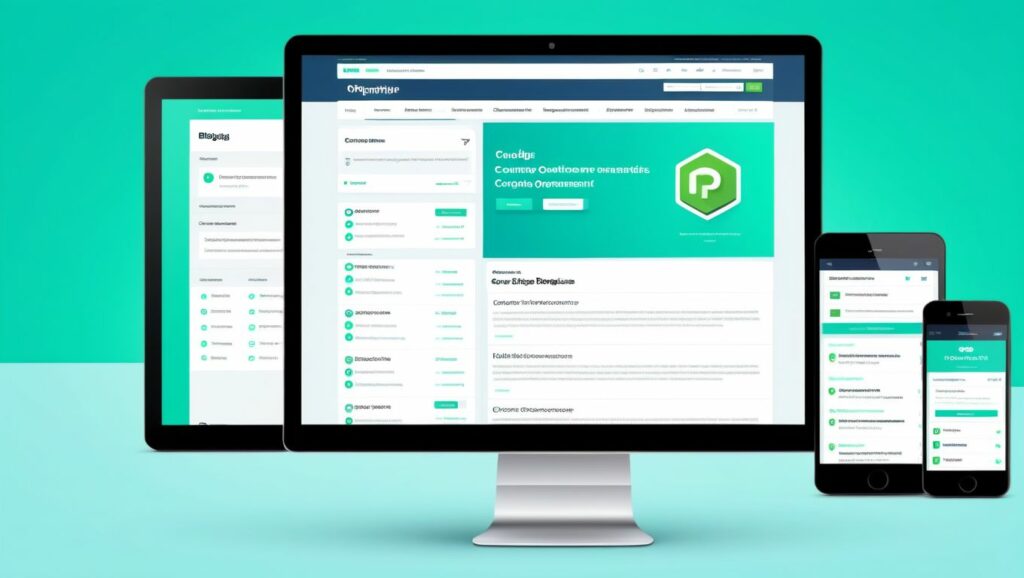Project Overview
A Real-Time Chat Application enables users to communicate instantly over the web. This project covers creating a chat system using PHP in combination with WebSockets, allowing for real-time message exchange without page reloads. This functionality is essential for modern web applications, including customer support systems, social platforms, and collaborative tools.
Prerequisites
Ensure you have the following:
- Web Server: Apache (using XAMPP, WAMP, or MAMP)
- PHP: Version 7.4 or higher
- MySQL: For database management
- Code Editor: VS Code, Sublime Text, PHPStorm, etc.
- Composer: For dependency management
- Basic Understanding of JavaScript, AJAX, and WebSockets
Step-by-Step Procedure
1. Setting Up the Development Environment
- Install XAMPP:
- Download from XAMPP Official Website.
- Follow the installation wizard and install it in the default directory.
- Start Apache and MySQL:
- Open the XAMPP Control Panel.
- Start the Apache and MySQL modules.
- Install Composer:
- Download from Composer Official Website.
- Follow the installation instructions for your operating system.
2. Creating the Database
- Access phpMyAdmin:
- Navigate to
http://localhost/phpmyadmin/in your browser.
- Navigate to
- Create a New Database:
- Click on “New” in the left sidebar.
- Name the database
chat_app. - Choose “utf8mb4_unicode_ci” as the collation.
- Click “Create”.
- Create a
usersTable:- Select the
chat_appdatabase. - Click on “New” to create a table.
- Define the table with the following fields:
- Click “Save”.
- Select the
- Create a
messagesTable: Field Type Null Key Default Extra id INT NO PRI NULL AUTO_INCREMENT user_id INT NO MUL NULL message TEXT NO NULL created_at TIMESTAMP NO CURRENT_TIMESTAMP- Click “Save”.
- Establish Foreign Keys:
messages.user_idreferencesusers.idwith ON DELETE CASCADE.
3. Installing Dependencies via Composer
To implement WebSockets in PHP, we’ll use the Ratchet library.
- Navigate to Project Directory:
- Open your terminal or command prompt.
- Navigate to the
chat-appdirectory.
- Initialize Composer:
composer init- Follow the prompts to set up your
composer.jsonfile.
- Follow the prompts to set up your
- Install Ratchet:
composer require cboden/ratchet
4. Project Structure
Organize your project files as follows:
chat-app/
├── vendor/ # Composer dependencies
├── config/
│ └── db.php
├── public/
│ ├── index.php
│ ├── login.php
│ ├── register.php
│ ├── chat.php
│ ├── logout.php
│ ├── assets/
│ │ ├── css/
│ │ │ └── styles.css
│ │ └── js/
│ │ └── chat.js
├── src/
│ └── Chat.php
├── server.php
├── composer.json
├── README.md
5. Configuration
a. Database Connection (config/db.php)
Create a file named db.php inside the config directory to handle database connections.
<?php
// config/db.php
$host = 'localhost';
$db = 'chat_app';
$user = 'root'; // Default XAMPP MySQL user
$pass = ''; // Default XAMPP MySQL password is empty
$charset = 'utf8mb4';
$dsn = "mysql:host=$host;dbname=$db;charset=$charset";
$options = [
PDO::ATTR_ERRMODE => PDO::ERRMODE_EXCEPTION, // Enable exceptions
PDO::ATTR_DEFAULT_FETCH_MODE => PDO::FETCH_ASSOC, // Fetch associative arrays
PDO::ATTR_EMULATE_PREPARES => false, // Disable emulation
];
try {
$pdo = new PDO($dsn, $user, $pass, $options);
} catch (\PDOException $e) {
// Handle connection errors
http_response_code(500);
echo "Database connection failed.";
exit;
}
?>
6. Creating the Chat Server (server.php)
Create a server.php file in the root directory to handle WebSocket connections.
<?php
// server.php
require __DIR__ . '/vendor/autoload.php';
require_once __DIR__ . '/config/db.php';
require_once __DIR__ . '/src/Chat.php';
use Ratchet\Http\HttpServer;
use Ratchet\Server\IoServer;
use Ratchet\WebSocket\WsServer;
$chatApp = new Chat($pdo);
$server = IoServer::factory(
new HttpServer(
new WsServer(
$chatApp
)
),
8080
);
echo "WebSocket server started on port 8080\n";
$server->run();
?>
b. Chat Class (src/Chat.php)
Create a Chat.php file inside the src directory to manage chat functionalities.
<?php
// src/Chat.php
use Ratchet\MessageComponentInterface;
use Ratchet\ConnectionInterface;
class Chat implements MessageComponentInterface {
protected $clients;
protected $pdo;
protected $users;
public function __construct($pdo) {
$this->clients = new \SplObjectStorage;
$this->pdo = $pdo;
$this->users = [];
}
public function onOpen(ConnectionInterface $conn) {
// Store the new connection
$this->clients->attach($conn);
echo "New connection! ({$conn->resourceId})\n";
}
public function onMessage(ConnectionInterface $from, $msg) {
// Decode the incoming message
$data = json_decode($msg, true);
if (!$data) {
return;
}
// Handle user authentication
if ($data['type'] === 'auth') {
$username = trim($data['username']);
$password = trim($data['password']);
// Authenticate user
$stmt = $this->pdo->prepare('SELECT * FROM users WHERE username = ?');
$stmt->execute([$username]);
$user = $stmt->fetch();
if ($user && password_verify($password, $user['password'])) {
$this->users[$from->resourceId] = $user['username'];
// Notify the user of successful authentication
$from->send(json_encode(['type' => 'auth', 'status' => 'success']));
// Notify others
$this->broadcast(json_encode(['type' => 'system', 'message' => "{$username} has joined the chat."]), $from);
} else {
// Authentication failed
$from->send(json_encode(['type' => 'auth', 'status' => 'fail', 'message' => 'Invalid credentials.']));
}
return;
}
// Handle chat messages
if ($data['type'] === 'message') {
if (!isset($this->users[$from->resourceId])) {
$from->send(json_encode(['type' => 'error', 'message' => 'You must authenticate first.']));
return;
}
$username = $this->users[$from->resourceId];
$message = htmlspecialchars(trim($data['message']));
if (empty($message)) {
return;
}
// Save message to database
$stmt = $this->pdo->prepare('INSERT INTO messages (user_id, message) VALUES (?, ?)');
$stmt->execute([$user['id'], $message]);
// Broadcast the message to all clients
$this->broadcast(json_encode(['type' => 'message', 'username' => $username, 'message' => $message, 'timestamp' => date("Y-m-d H:i:s")]));
}
}
public function onClose(ConnectionInterface $conn) {
// The connection is closed, remove it
$this->clients->detach($conn);
if (isset($this->users[$conn->resourceId])) {
$username = $this->users[$conn->resourceId];
unset($this->users[$conn->resourceId]);
// Notify others
$this->broadcast(json_encode(['type' => 'system', 'message' => "{$username} has left the chat."]));
}
echo "Connection {$conn->resourceId} has disconnected\n";
}
public function onError(ConnectionInterface $conn, \Exception $e) {
echo "An error has occurred: {$e->getMessage()}\n";
$conn->close();
}
private function broadcast($msg, $exclude = null) {
foreach ($this->clients as $client) {
if ($client !== $exclude) {
$client->send($msg);
}
}
}
}
?>
c. Creating the Chat Interface (public/chat.php)
Create a chat.php file inside the public directory to provide the chat interface.
<?php
// public/chat.php
require_once __DIR__ . '/../config/db.php';
require_once __DIR__ . '/../templates/header.php';
?>
<h2>Real-Time Chat</h2>
<div id="chat-container">
<div id="chat-box" style="height:400px; border:1px solid #ccc; overflow-y:scroll; padding:10px;">
<!-- Messages will appear here -->
</div>
<form id="chat-form">
<input type="text" id="message-input" placeholder="Type your message here..." autocomplete="off" required style="width:80%;">
<button type="submit">Send</button>
</form>
</div>
<script>
// public/assets/js/chat.js
let conn;
const chatBox = document.getElementById('chat-box');
const chatForm = document.getElementById('chat-form');
const messageInput = document.getElementById('message-input');
// Prompt user for credentials
const username = prompt("Enter your username:");
const password = prompt("Enter your password:");
// Establish WebSocket connection
conn = new WebSocket('ws://localhost:8080');
conn.onopen = function(e) {
console.log("Connection established!");
// Send authentication data
conn.send(JSON.stringify({
type: 'auth',
username: username,
password: password
}));
};
conn.onmessage = function(e) {
const data = JSON.parse(e.data);
if (data.type === 'auth') {
if (data.status === 'success') {
appendMessage("System", "You have joined the chat.");
} else {
alert(data.message);
conn.close();
}
} else if (data.type === 'message') {
appendMessage(data.username, data.message, data.timestamp);
} else if (data.type === 'system') {
appendMessage("System", data.message);
} else if (data.type === 'error') {
appendMessage("Error", data.message);
}
};
conn.onclose = function(e) {
console.log("Connection closed.");
appendMessage("System", "You have been disconnected.");
};
conn.onerror = function(e) {
console.log("Connection error:", e);
};
// Handle form submission
chatForm.addEventListener('submit', function(e) {
e.preventDefault();
const message = messageInput.value.trim();
if (message === '') return;
conn.send(JSON.stringify({
type: 'message',
message: message
}));
messageInput.value = '';
});
// Function to append messages to the chat box
function appendMessage(sender, message, timestamp = null) {
const messageElement = document.createElement('div');
if (timestamp) {
const time = new Date(timestamp).toLocaleTimeString();
messageElement.innerHTML = `<strong>[${time}] ${sender}:</strong> ${message}`;
} else {
messageElement.innerHTML = `<strong>${sender}:</strong> ${message}`;
}
chatBox.appendChild(messageElement);
chatBox.scrollTop = chatBox.scrollHeight;
}
</script>
<?php
require_once __DIR__ . '/../templates/footer.php';
?>
d. Creating the Chat Page (public/index.php)
Update the index.php file inside the public directory to link to the chat interface.
<?php
// public/index.php
require_once __DIR__ . '/../templates/header.php';
?>
<h2>Welcome to the Real-Time Chat Application</h2>
<p><a href="chat.php">Join the Chat</a></p>
<?php
require_once __DIR__ . '/../templates/footer.php';
?>
9. Running the WebSocket Server
- Start the WebSocket Server:
- Open your terminal or command prompt.
- Navigate to the project root directory (
chat-app). - Run the server using PHP:
php server.php - You should see the message:
WebSocket server started on port 8080
10. Testing the Chat Application
- Register Users:
- Navigate to
http://localhost/chat-app/public/register.php. - Register multiple users by filling out the registration form.
- Navigate to
- Login and Access Chat:
- Navigate to
http://localhost/chat-app/public/login.php. - Log in with the registered credentials.
- After logging in, go to
http://localhost/chat-app/public/chat.php.
- Navigate to
- Interact in Chat:
- Open multiple browser windows or tabs and log in with different users.
- Send messages and observe real-time updates across all connected clients.
- Verify Message Persistence:
- Messages are stored in the
messagestable. - Implement functionality to load previous messages on connecting if desired.
- Messages are stored in the
11. Deployment Considerations
When deploying your Real-Time Chat Application to a live server, consider the following:
- WebSocket Server Deployment:
- Deploy the WebSocket server on a separate server or use services that support WebSockets.
- Ensure that the server is accessible over the internet and secured properly.
- Security:
- Implement authentication and authorization to secure the chat system.
- Use HTTPS and WSS (WebSocket Secure) protocols to encrypt data transmission.
- Scalability:
- Plan for scaling the WebSocket server to handle multiple concurrent connections.
- Consider load balancing and horizontal scaling strategies.
- Input Sanitization:
- Sanitize all user inputs to prevent XSS and injection attacks.
- CORS Configuration:
- Configure Cross-Origin Resource Sharing (CORS) appropriately to restrict unauthorized access.
- Error Handling:
- Implement comprehensive error handling and logging for debugging and monitoring purposes.
- Session Management:
- Secure session handling to prevent hijacking and fixation attacks.
12. Enhancements and Best Practices
- Message History:
- Load previous chat messages when a user connects to provide context.
- User Presence Indicators:
- Show online/offline status of users in the chat.
- Private Messaging:
- Implement functionality for users to send private messages to each other.
- Typing Indicators:
- Show when a user is typing a message.
- File Sharing:
- Allow users to share files, images, or media within the chat.
- Notifications:
- Implement desktop or browser notifications for new messages.
- User Avatars:
- Allow users to upload profile pictures displayed in the chat.
- Admin Controls:
- Provide admins with the ability to moderate the chat, such as deleting inappropriate messages or banning users.
- Mobile Responsiveness:
- Ensure that the chat interface is responsive and works well on mobile devices.
- Integration with Frontend Frameworks:
- Enhance the user interface using frontend frameworks like React, Vue.js, or Angular for a more dynamic experience.
- Database Optimization:
- Optimize database queries and indexes to ensure efficient data retrieval and storage.
- Use of Libraries and Frameworks:
- Explore PHP frameworks like Laravel or Symfony to streamline development and leverage built-in features.













